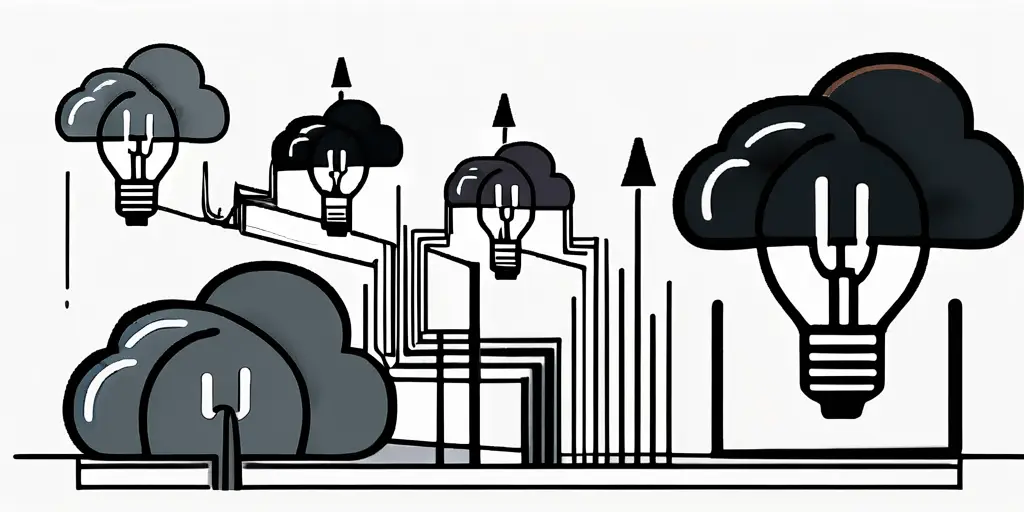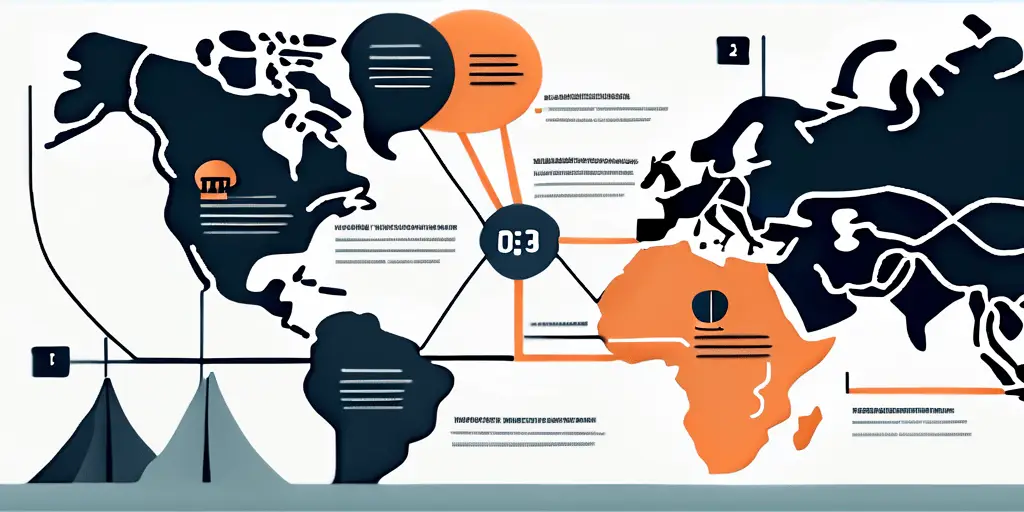Disinformation and misinformation have become increasingly prevalent in today’s digital age, often used interchangeably when discussing the spread of false information. However, it is vital to understand the key differences between these two terms. By exploring their definitions, origins, impact on society, the role of media, strategies for identification, and their future trends, we can gain a comprehensive understanding of disinformation and misinformation.
Defining Disinformation and Misinformation
Let us begin by defining disinformation and misinformation. Disinformation refers to intentionally spreading false or misleading information with the purpose of deceiving others. It is a deliberate act, often perpetrated by state-sponsored actors or malicious groups aiming to manipulate public opinion or advance their own agenda.

In contrast, misinformation refers to the inadvertent sharing of false or inaccurate information without intent to deceive. It might result from genuine mistakes, misunderstandings, or the spread of rumors.
Disinformation campaigns have become increasingly sophisticated in the digital age, leveraging social media platforms and online forums to reach a wide audience quickly. These campaigns often employ tactics such as creating fake accounts, manipulating images and videos, and exploiting algorithmic biases to amplify their reach.
On the other hand, misinformation can spread rapidly through social networks, fueled by the human tendency to share information without verifying its accuracy. This phenomenon is particularly prevalent during times of crisis or uncertainty, where individuals may inadvertently contribute to the dissemination of false information due to a lack of fact-checking or critical thinking.
The Origins and Evolution of Disinformation and Misinformation
The origins of disinformation can be traced back centuries, but it has seen a significant evolution in recent times. During the Cold War, disinformation campaigns were employed by intelligence agencies to influence public opinion and gain geopolitical advantages.

Misinformation, on the other hand, has existed throughout human history, with rumors spreading through word of mouth or printed publications. However, the rise of social media and the internet has accelerated its dissemination, as information can now travel instantaneously to a global audience.
One notable example of a historical disinformation campaign is Operation Infektion, a Soviet disinformation campaign in the 1980s that aimed to spread the false claim that the United States had created the HIV virus as a biological weapon. This campaign, which was spread through various media outlets and front organizations, demonstrates the power of disinformation to shape public perception and sow discord.
On the other hand, misinformation in the digital age has taken on new forms, such as deepfakes and viral hoaxes that are designed to deceive and manipulate viewers. The speed and reach of social media platforms have made it challenging to combat the spread of misinformation, leading to widespread confusion and distrust in traditional sources of information.
The Impact of Disinformation and Misinformation on Society
Disinformation, with its intentional nature, can have severe consequences on societies. For instance, the Cambridge Analytica scandal revealed the extent to which disinformation campaigns can manipulate democratic processes by targeting individuals with tailored misinformation.
Misinformation, although unintentional, can also have detrimental effects. The spreading of false health information, such as bogus cures or vaccines, can put lives at risk and undermine public health efforts.
Furthermore, the rise of social media has amplified the spread of disinformation and misinformation. Platforms like Facebook, Twitter, and YouTube have become breeding grounds for false narratives and conspiracy theories to flourish unchecked. The viral nature of social media allows misinformation to spread rapidly, reaching a wide audience before fact-checkers can debunk it.
In addition, the lack of media literacy among the general population exacerbates the problem. Many individuals struggle to discern credible sources from unreliable ones, making them more susceptible to falling for false information. This highlights the importance of education on critical thinking and fact-checking in the digital age.
The Role of Media in Spreading Disinformation and Misinformation
Traditional media outlets have historically played a pivotal role in the dissemination of disinformation. State-controlled media can serve as a powerful tool to propagate false narratives and manipulate public opinion, as seen in propaganda during times of war or political unrest.
In recent years, social media platforms have emerged as prominent channels for the spread of misinformation. The viral nature of user-generated content, combined with echo chambers and algorithmic amplification, allows falsehoods to quickly gain traction and reach a wide audience.
Furthermore, the rise of deepfake technology poses a new and alarming threat to the spread of disinformation through media. Deepfakes are hyper-realistic, manipulated videos or audio recordings that can deceive viewers into believing false information or statements were made by real individuals. This technology has the potential to create highly convincing fake news stories that blur the lines between reality and fiction, further complicating the landscape of truth in media.
Another aspect to consider is the role of clickbait and sensationalism in perpetuating misinformation. Media outlets, both traditional and digital, often prioritize generating clicks and engagement over factual accuracy. This has led to the proliferation of sensationalized headlines and content designed to provoke strong emotional reactions, sometimes at the expense of truth and objectivity. As a result, consumers are frequently exposed to misleading or exaggerated information that can shape their perceptions and beliefs.
Strategies for Identifying and Combating Disinformation and Misinformation
Identifying and combatting disinformation requires a multi-faceted approach. Various tools and initiatives have been developed to detect and debunk false information. Fact-checking organizations, such as Snopes and PolitiFact, play a critical role in verifying claims and providing accurate information to the public.
Combating misinformation requires efforts to promote media literacy and critical thinking skills. Teaching individuals how to evaluate sources, fact-check information, and recognize biased narratives can empower them to become discerning consumers of news and information.
One effective strategy in the fight against disinformation is the use of artificial intelligence (AI) and machine learning algorithms. These technologies can analyze vast amounts of data in real-time to identify patterns and inconsistencies that may indicate the spread of false information. By leveraging AI, researchers and organizations can stay ahead of the curve in detecting and countering misinformation.
Furthermore, collaborative efforts between tech companies, government agencies, and civil society groups are essential in combating disinformation at scale. By sharing resources, expertise, and best practices, these stakeholders can create a united front against the proliferation of false information online. Establishing partnerships and information-sharing networks can enhance the efficiency and impact of disinformation mitigation strategies.
The Future of Disinformation and Misinformation
As technology continues to advance, the future of disinformation and misinformation presents new challenges. One predicted trend is the increasing sophistication of deepfake technology, which can create realistic yet fabricated videos or images.
Additionally, as more companies embrace artificial intelligence and automated systems, the risk of algorithmic bias and the inadvertent spread of misinformation increases. It is crucial to develop robust mechanisms to ensure that technology is used responsibly and ethically.
Moreover, the rise of social media platforms as primary sources of news and information has also contributed to the spread of disinformation. The viral nature of content on these platforms can lead to the rapid dissemination of false or misleading information before fact-checking can occur. This phenomenon underscores the importance of media literacy and critical thinking skills in navigating the digital landscape.
Furthermore, the global interconnectedness facilitated by the internet has made it easier for misinformation to cross borders and reach a wider audience. This presents a challenge for policymakers and tech companies in developing effective strategies to combat the spread of false information without infringing on freedom of speech and expression.
In Conclusion
In conclusion, disinformation and misinformation may seem similar on the surface, but they possess distinct characteristics and origins. Understanding the differences between these terms is essential for addressing the challenges they pose to our society and democracy. By staying vigilant, acquiring media literacy skills, and promoting responsible information sharing, we can begin to combat the detrimental effects of false information and safeguard the integrity of our digital landscape.

As we navigate the complexities of disinformation and misinformation in the digital age, the security of your business’s data and compliance with regulatory standards should be a top priority. Blue Goat Cyber, a Veteran-Owned business, is at the forefront of providing comprehensive B2B cybersecurity services. Whether you’re in need of medical device cybersecurity, penetration testing, or ensuring HIPAA and FDA compliance, our expertise is your safeguard against attackers. Contact us today for cybersecurity help and partner with a team that’s as committed to your security as you are to your clients.
